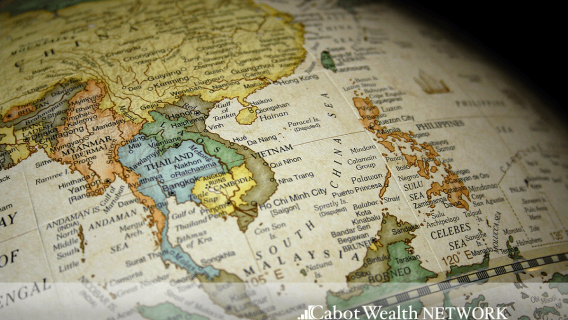One of the most important distinctions between the established economies in America, Europe and Japan and emerging markets across the globe is the opportunity for growth.
Emerging markets are fueled by a young, vibrant consumer class, coupled with the world’s most fascinating cultures, nature, and landmarks.
Those markets are often ripe with opportunity for early investors.
I have been fortunate to gain on-the-ground experience in many of these markets, particularly in Asia. This has allowed me the opportunity to meet some tycoons – sometimes referred to as Taipans, a term which roughly translates as “tycoon.”
While the term tycoon may conjure images of private jets or luxury, it’s worth remembering that most of the new global tycoons did not begin their journeys with fabulous wealth. Rather, they saw an opportunity for significant growth and simply seized it.
In all likelihood, you are better educated and grew up in much better circumstances compared to most new tycoons.
So just what is their edge? Why do they see opportunities that elude us mortals? In short, they think big and are very attentive to what is happening on the ground. They have great personal and professional networks that feed them valuable intelligence. Add a pinch of imagination and a shot of courage, and you have a potential tycoon.
If you wish to become a Taipan, I suggest you look beyond China and India in the coming year to a story that is being completely missed by even the most sophisticated investors – the 10 nations of Southeast Asia.
These countries share more than geography. They have a young, tech-savvy population with a rising middle class and booming consumer markets. For example, Indonesian consumer spending has more than doubled in the last decade as it approaches becoming a $1 trillion economy.
Singapore is already the world’s richest nation on a per capita basis. Vietnam has the fastest-growing economy in the world and is projected to do even better this year.
I can assure you right now that the new billionaire tycoons grasp that global power and profits are making a dramatic pivot to the Pacific Rim.
Just as the 20th century was centered on the Atlantic, the 21st century belongs to the nations bordering the Pacific Ocean.
Now, quite frankly, following the new tycoons is not for everyone.
Yes, there is a bit more risk investing in the leading food company of Singapore, Chile, Panama, Indonesia, Korea, Mexico, or Taiwan than investing in Kraft Heinz (KHC), but the potential reward is far, far greater.
Just imagine the opportunity right now to invest in the Johnson & Johnson (JNJ) stock of a century ago. This is how the new tycoons are building their fortunes at lightning speed while most investors keep falling behind.
You too can profit greatly by investing in the JPMorgan of Singapore, the Heinz of Malaysia, the Kraft of Thailand, the Starbucks of Taiwan, the Chevron of Indonesia and the JetBlue of Panama.
This is your opportunity – now go out and seize it. Here are two ideas I would buy now to get you started.
2 Southeast Asian Stocks for Your Inner Tycoon
DBS Bank (DBSDY) is a high-quality play on growth in Southeast Asia. It’s the largest and strongest bank in Southeast Asia and the leading consumer bank in both Hong Kong and Singapore. Its tentacles reach out through more than 200 branches in 50 cities. DBS produces steady profit margins, revenue, and earnings and is also increasing market share in consumer and corporate banking. Despite all of these strengths, DBS is trading at only 9.7 times trailing earnings and sports a solid 5.5% dividend yield. This is a high-quality, conservative idea for all investors.
Sea Limited (SE) shares are up 115% so far in 2024. Sea is an internet company with a gaming business along with an e-commerce and digital payments business
Sea’s e-commerce business, Shopee, is looking better as its losses are declining while revenue growth remains strong. Sea also has a massive growth opportunity targeting Southeast Asia. Meanwhile, SeaMoney, Sea’s digital financial services unit, achieved profitability last year on $472 million in revenues.
Although the end of the pandemic forced Sea to recalibrate its growth strategies, the efforts are beginning to pay dividends.
I encourage you to get out to see these Southeast Asian emerging markets. You will see the growth opportunities and may meet a real Taipan.
